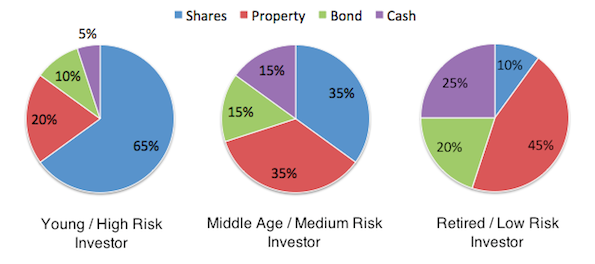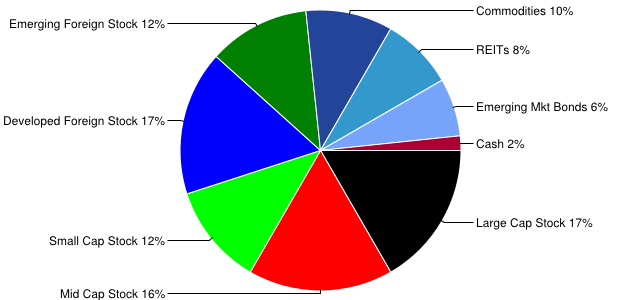Asset Allocation Definition Example
Post on: 23 Июнь, 2015 No Comment

What it is:
Similar to diversification. asset allocation refers to the portioning of a portfolio among various types of investment asset classes so as to maximize return for a given level of risk.
How it works/Example:
Just as it is prudent to diversify a portfolio among a number of holdings to reduce volatility, it is also generally recommended that an investor spread out his or her investments among several asset classes. Because different categories — for example, domestic bonds and foreign stocks — might have returns that are not closely correlated, investing in both can help provide downside protection should one or the other begin to decline.
Within equities (stocks), there are many sub-categories, based on company size ( market capitalization ), industry (retail, technology, healthcare, etc), style (growth, value, income ), and location (domestic or foreign). Likewise, the fixed-income category can be broken down by maturity. credit quality. and issuer ( corporation. municipality, government, etc). There are also many alternative investments to consider, such as real estate. derivatives. precious metals, and collectibles. Asset allocation is a term used to describe how an investor chooses to divvy up his or her investments among these different asset classes.
In the example above, Mr. Smith has allocated his portfolio among a broad cross-section of assets, including small-cap and large-cap stocks, investment-grade and high-yield bonds, and cash. The overall portfolio has a 60/40 mix of stocks and bonds.
Why it Matters:

Asset allocation is a key concept in financial planning and investment management and is the driving force behind Modern Portfolio Theory (MPT). Many academics have studied portfolio performance and concluded that constructing an efficient portfolio is the key to optimizing returns for a given level of risk. The assumed level of risk for any investor is based on a number of factors. including risk tolerance, time horizon, and investment goals and objectives.
It is generally recommended that younger investors with longer holding periods maintain a more aggressive portfolio that is more heavily weighted toward stocks. Older investors, on the other hand, are typically more focused on capital preservation than growth and are thus often advised to construct more conservative portfolios tilted towards bonds .
How an investor chooses to allocate his or her investments is one of the most important decisions he or she can make, and it often has a more profound impact on portfolio returns than the actual securities chosen. In fact, some studies have shown that up to 97% of a portfolio’s overall returns can be explained by asset allocation decisions, with security selection, market timing. and all other factors combined having a much smaller influence.














